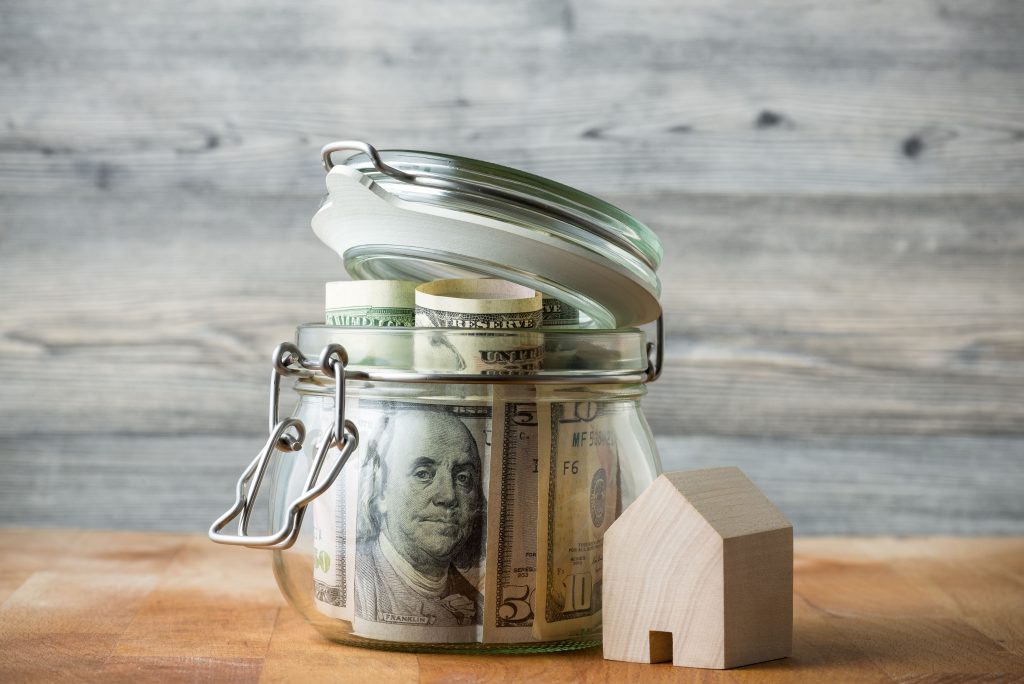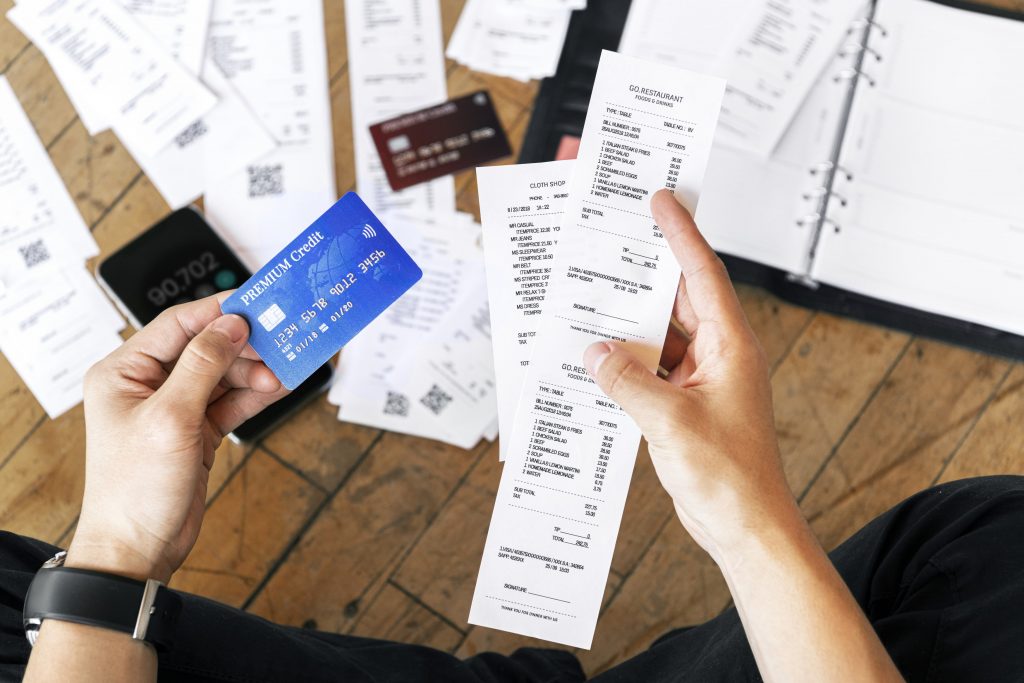How to Save for a Down Payment on a House
Down Payment for a Mortgage
Saving money is one of the hardest things to do when it comes to maintaining your finances. Especially when you have other expenses that are unavoidable, including bills, tuition, and basic life necessities. No matter the background you come from, it can be an extremely daunting task to comfortably put aside extra money and not spend it on impulsive instinct.
However, maybe you’re at a point in your life where you’re ready to move up and take a serious step toward one of life’s biggest accomplishments: homeownership. If that’s the case for you, we want to congratulate you and support your financial goals! One obstacle that may prevent you from getting your foot in the door is having enough saved for a down payment.
Although putting forward a down payment isn’t the first step of the mortgage process (pst… it’s getting pre-approved), it is a stage that can decide if you’re financially ready to buy a home or not. Because we want to guide you past these financial milestones, here are some ways to save for your dream home.
What is a Down Payment?
First, let’s start with the basics. You may think that when you start the mortgage process, you pay your closing costs right away, which is not the case. When you find your dream house and make an offer, the next step is to put a down payment.
Why is that? A down payment is an initial up-front payment that is part of the total amount of the home. A loan is then required to finance the remainder of the listing price of your dream home, which is where your mortgage comes in.
Think of a down payment as an initial deposit that secures your financial position until the rest of the process is finalized. Notable things to remember about a down payment are one, the down payment is part of your total closing costs, and two, it goes toward your overall payment of the home.
Do I Need a 20% Down Payment?
How much do you think you need for a down payment on your dream home? One of the biggest myths in the mortgage industry is that a down payment is strictly 20% across every transaction and situation. Fortunately, this is not the case and depends on so many other factors.
The reason why you may have heard this common myth is because putting a down payment of 20%, while not required with most loan programs, can put first-time home buyers like you in a very favorable position. For example on conventional loan programs, putting 20% down will automatically exclude mortgage insurance from your monthly payment, which means you don’t have to worry about paying a few hundred extra dollars each month. However, if you are not able to put 20% down, trust us, it is not the end of the world. You still may be able to make ends meet and here’s why.
There are several families and individuals who are not in a position to put 20% down. If you happen to be one of them, that is completely fine! That just means you will need to budget a little bit more each month to fulfill your monthly mortgage payments. Down the road, there may even be opportunities for you to remove mortgage insurance for a lower monthly payment. Some ways to remove it include refinancing, remodeling, getting a second appraisal or prepaying on your mortgage.
7 Ways to Save for a Down Payment
For those who don’t know where to start with saving, wouldn’t some tips and tricks be helpful? There are several ways to save for a down payment, but here are some that we found to be the most effective:
1. Pass on luxury items
You know those expensive pair of shoes that you’ve been thinking of? Or that VIP ticket to an upcoming concert by your favorite band? No matter the expense that would make you temporarily happy, but also happens to be costly, we suggest that you pass on it for now. Try to wait a few years on treating yourself after you treat yourself to your dream home.
2. Budget
Budgeting is not as easy as it sounds. Especially when you might not know where to start or what limits to set on your recurring expenses. To start, first calculate how much you need to save for your end financial goal, which in this instance is your down payment. After knowing that amount, take a few steps back and calculate how much you currently spend each month for each expense. From there, you should be able to see how much you have leftover each month to save and how long it would take to reach your goal. To cut or reduce any overwhelming expenses, simply analyze your current lifestyle. For example, if your gym membership happens to be a monthly expense, but you don’t go as much anymore, try finding another gym at a lower price or opt for working out at home or in your neighborhood.
3. Seek additional income
Another way to ensure you have enough to save is to earn more money, specifically by finding an additional source of income. Keep in mind that another source of income doesn’t have to be in the form of a second job, but maybe you excel at your favorite hobbies, such as cooking, arts and crafts, or tutoring. By leveraging a personal skill you already have and marketing yourself to your family, friends, and local community, you can try out self-entrepreneurship while earning more money, giving you more to save.
4. Set a timeline
Setting a solid timeline can make your financial goals feel more realistic. Are you trying to purchase a home in 1 year, 3 years, or 5 years? By having a rough estimate of when you want to achieve homeownership, you can budget around your timeline and calculate how much you would need to save each month to be finally ready.
5. Decide your priorities
Prioritizing is critical at any stage of life, especially when it comes to money. Try jotting down all the expenses you consistently make and think about which items should be given more attention than others. This practice will help you reduce allocation on other lower priority items and provide you clarity on your overall financial situation.
6. Make saving automatic
With most banks and financial institutions, you may have the option to automatically transfer a certain amount each month from an account of your choice into your savings account. Many favor this option because it removes the hassle of having to remember each time, while maintaining consistency. Keep in mind that even with automatic saving options, you will still need to monitor the account that you are pulling money from to ensure that your account doesn’t go into overdraft.
7. Monitor your savings
The only way to know if you’re about to reach your down payment goal is to continually track it as time goes by. Even though you may already have a certain amount that you pay on a set timeframe, it’s always a good measure to look into your account from time to time and confirm that everything looks good according to your savings plan.
Alternative Options
Now, if saving is not a viable option for you or you’re looking to purchase a home as soon as possible, consider these alternative options:
Gift money: Using gift money for a down payment is very common in the mortgage world and could be used to your advantage. If you have a family member, close friend with a defined relationship, or fiancé who is willing to gift you money, it can be used for your down payment, saving you time from having to save taking you one step closer to your goal.
Other down payment options: Many homeowners are unaware of this, but there may be other loan products that your lender offers that require as little as 3% down or no down payment at all. At RWM Home Loans, we offer down payment assistance programs that allow those looking to purchase a home achieve homeownership much sooner than they thought possible. Check in with your trusted mortgage lender to see what loan options are available to you.
Co-borrowing: Are you planning to purchase your home with someone else, like a family member or your partner? Then you may be able to split the total cost of the down payment! If this is the route you take, keep in mind that co-borrowers are jointly obligated to repay the new mortgage and will be under the same financial scrutiny as you.
Wait: Sometimes, right now isn’t even the best time. Maybe you’re constantly on the fence about the homebuying decision and would rather feel safe knowing you can wait a few years before taking on such a large financial responsibility. While there’s no harm in that, remember that we will be there when you’re ready!
Saving Will Be Worth the Wait
We all know that saving is not the easiest task, especially when it’s for one of the biggest purchases of your life. It’s important to maintain a motivational mindset and remember that every dollar you save is just one step closer to your dream home. Whether your savings plan is short-term or long-term, try to be consistent and stay on track. After all, the light at the end of the tunnel is your next dream home, so keep dreaming big.
Applying for your mortgage, while not as difficult as saving, can require you to be communicative and accurate. To ensure you are going about the process as smoothly as possible, read some of our helpful tips and tricks before submitting your documentation. Good luck!








